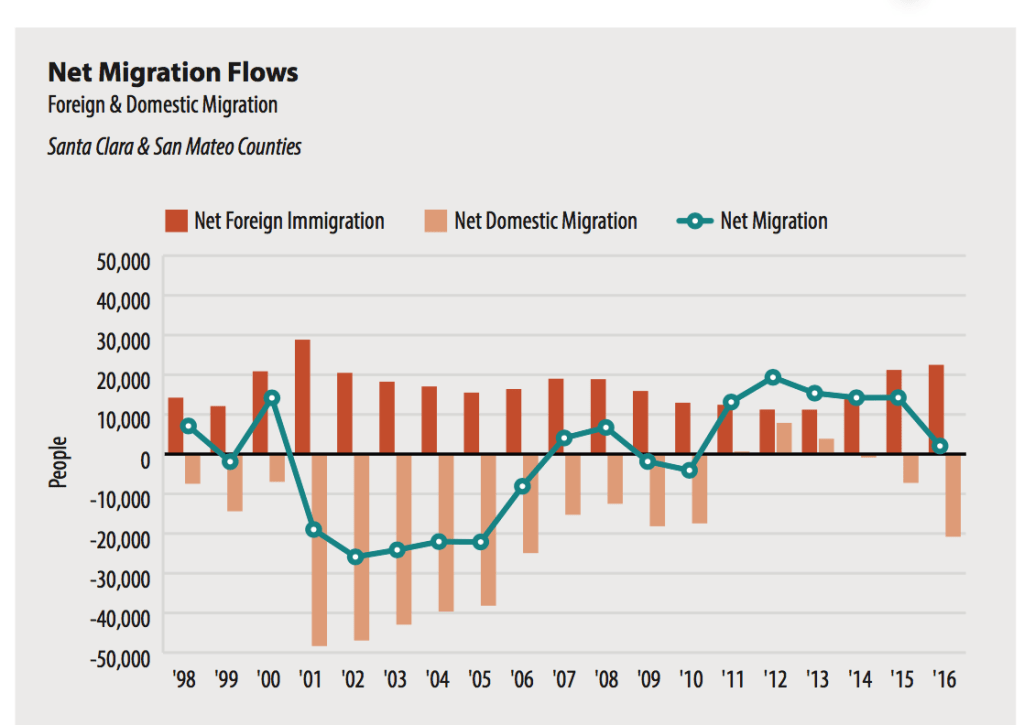Some time ago, we compared technical interviews from the 1960s to those of today: They’ve gotten much, much harder. I suggested that the last few decades of lax immigration have invited overseas talent to raise the bar – it was unfounded speculation at the time, but some number crunching shows it might be true.
According to this Joint Venture Silicon Valley report, 74% of Silicon Valley tech workers are foreign-born immigrants. A decade ago, 36% of Silicon Valley tech workers were born abroad. In 2000, only 29% were.

Tech industry employment has increased from about 300,000 jobs in 2007 to 400,000 in 2016, so even though we created 100,000 engineering positions in the last decade, we’ve also displaced 88,000 domestic engineers. Assuming US engineers haven’t grown incompetent, the applicant pool must be more competitive than ever before.
American tech workers are getting pushed out, and they aren’t coming back:

The net migration chart reflects the evolution of the H-1B program. The Immigration Act of 1990 originally set an annual cap of 65,000 skilled immigrants. Bill Clinton’s 1998 Workforce Improvement Act increased the cap to 115,000. In response to dot-com mania, Clinton further increased the cap to 195,000 in 2000. George W. Bush returned the annual cap to 85,000 in 2004, where it remains today.

Take a quick look at the H-1B recipient countries and we have the answer to Silicon Valley’s diversity problem as well. 69% of H-1B visas are granted to India and 11% to China. Other countries receive less than 2% apiece. Assuming that Hispanics and African-Americans don’t come from Asia, it’s no wonder Google’s diversity initiatives keep failing.
(The government doesn’t release H-1B gender data, but reports from old FOIA requests suggest that tech immigrants are predominantly male.)
A Note on H1B Visas:
An H-1B employer is required to take good-faith measures to recruit US workers before petitioning for an H-1B visa. This is hard to enforce due to the subjectivity of the hiring process. Even if US workers are just as qualified as foreign workers, Americans are usually unwilling to work for the same low wages.
